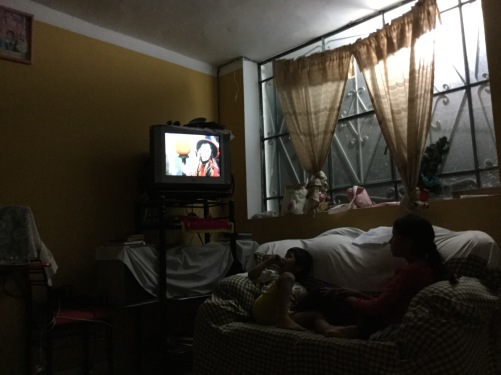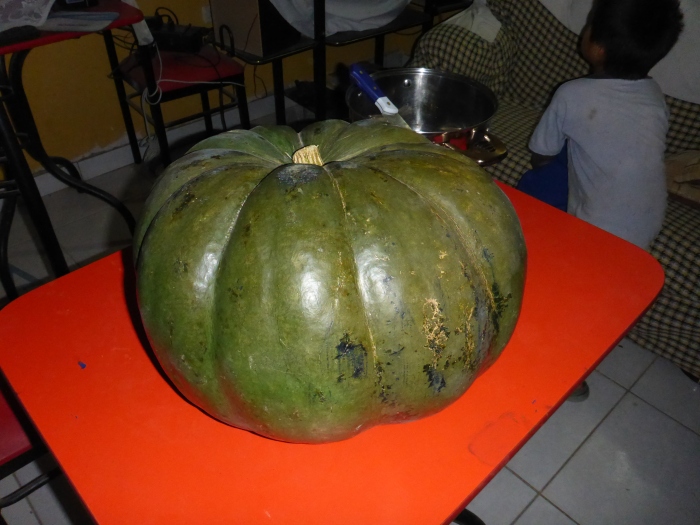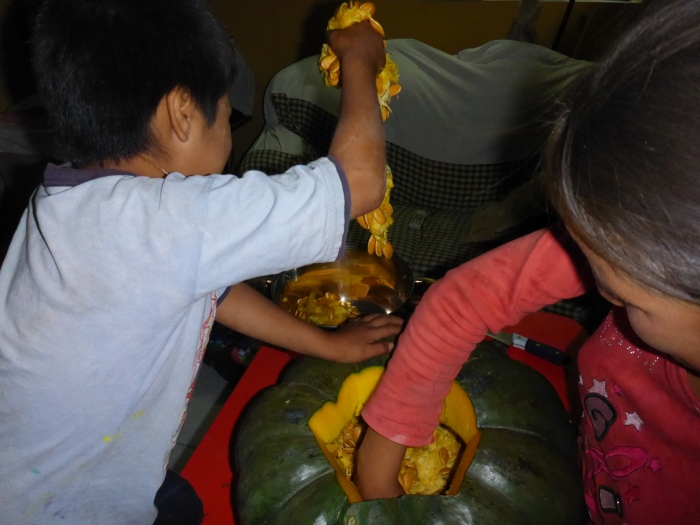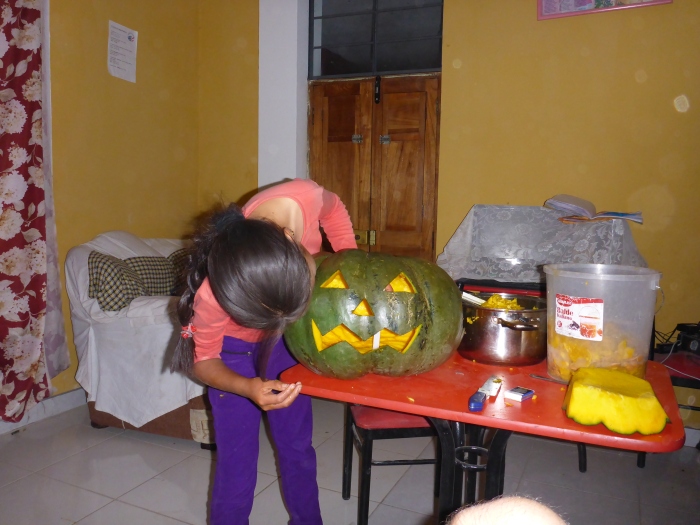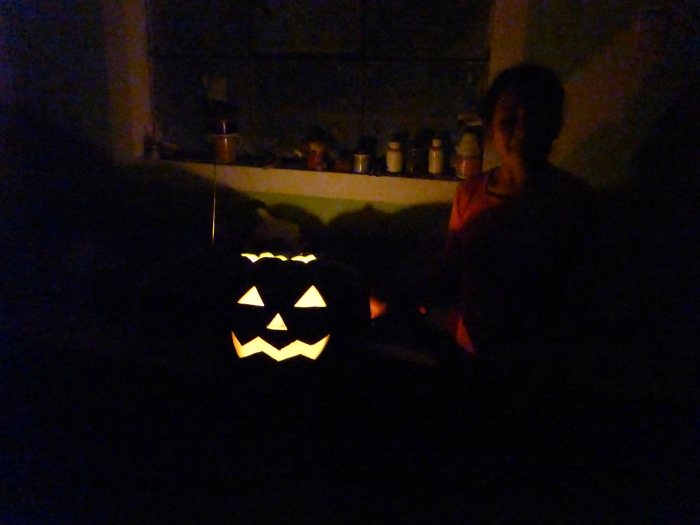Today, we are going to talk trash. I mean, talk about trash.
Trash, or solid waste (residuos sólidos) is a huge problem here in Perú. While countries such as the U.S. or even England probably produce more waste than Perú, the biggest challenge here is the lack of trash management infrastructure: there are few places where trash can be securely managed.
In the United States, I took the trash collection service and abundance of public trashcans for granted; we have many landfills, most people learned how to recycle and not to litter in their schools, and waste for the most part seemed to be processed safely. We have it pretty good, and consequently we don’t feel as guilty about the abundance of single-use items that permeate the daily lives of most U.S. citizens. We don’t feel the need to renovate the system, because we think we are already doing a great job.
In contrast, Perú is isn’t so well off with regard to trash management and is currently in the midst of its first trash revolution. Things started picking up in the year 2000 when Perú created its first law about trash: la Ley General de Residuos Sólidos (the General Law of Solid Waste). The law was a good start; it outlined a general basis for trash management in Perú, specifically noting the role of location municipalities in managing waste. While the law was a positive beginning, it wasn’t until a few years later that larger strides were made at national and local levels to deal with the trash problem.
In 2004 and 2008, the Ley General de Residuos Sólidos was further elaborated to include specific roles and competencies in trash management for municipalities and other entities, thus becoming a more complete and definitive law. In 2005, the Peruvian Government took another step forward and created the Ley General del Ambiente (The General Environmental Law) that established the environmental rights and obligations of all citizens, such as the right to live in a healthy environment free of pollution and trash. In subsequent years, further laws were created to address the issues of electronic waste as well as informal recyclers as well.
However, the biggest catalyst came in 2008 when Perú created MINAM (The Environmental Ministry), which fused several different pre-existing environmental authorities into one unified ministry to address all of Perú’s environmental concerns. The previous iteration of MINAM was CONAM (The National Environmental Council), a non-autonomous organization that held little power and served mostly to advise the presidency.
Since the creation of MINAM, trash management in Perú and in fact environmental management, has become a national priority, and there have been countless initiatives to upgrade Perú’s trash management system. However, tt the moment, only 9 officially recognized sanitary landfills exist in all of Perú, half of which are localized in Lima and almost all of which were created within the last 15 years. What this means is that many parts of the country are still relying on informal trash dumps or other poor solid waste management practices to deal with all the trash produced.
In many sites in Perú, trash management is a family affair; each household takes care of their trash however they see fit. Here in the Sierra of Áncash, the most common practices involve burying trash in crop fields, burning it, dumping it along the side of the road, or throwing it in water canals or even directly to the river. There is also no culture, yet, against littering; I can recall countless times when I have been traveling in a car or bus and witnessed someone throw a bottle or plastic bag out of the window. But this happens because this is what everyone is accustomed to; when public trash cans aren’t readily available and there is no trash collection service, what can we expect?
Those responsible for trash management and at the local level are the municipalities, however tackling the trash problem is formidable. Even when a municipality has interest in implementing a trash collection service, such a service often can’t be implemented to the letter of the law due to various factors: insufficient budget, lack of infrastructure, lack of community support, lack of expertise in environmental themes. According to the law, all municipal waste should be deposited in a sanitary landfill, however the construction of one is multi-year, multi-million “soles” process and so not something to be done from one day to the next. Therefore, most municipalities who are trying to do something about the trash have to rely on informal trash dumps, which can vary in quality. From talking with other Volunteers, informal trash dumps could be a hill overhanging a river, or a small trench where the municipality deposits its waste. Essentially, there is a lot of work to be done.
But despite all these challenges, Perú is making great strides at national and local levels to improve how local governments approach trash. For example, each year the Peruvian government launches a “Plan de Incentivos” (Incentive Plan) that allows municipalities to earn more funds for the following year if they can meet several different goals or tasks. Generally, many of the Plan de Incentivos goals are environmentally focused; complete a solid waste characterization study, implement a trash segregation program, survey local communities about water availability and sanitation, etc. Trying to accomplish the goals of the Plan de Incentivos is definitively one of the biggest factors guiding environmental progress at the local level; money is a great motivator. Apart from incentivizing, MINAM and the Peruvian government spur environmental progress through fear of sanctions and fines as well: municipalities that don’t comply with environmental laws can receive heavy sanctions, which can take away from the year’s budget and carry other consequences. Once again, money is a great motivator.
The organization responsible for environmental monitoring and consulting is the OEFA, which is a sub-entity of MINAM that has similar functions to the EPA (Environmental Protection Agency). About once a year, OEFA visits each district and provincial municipality in Perú to evaluate compliance with environmental regulation, provide technical support when needed, and in general inform municipalities and communities of their environmental rights and obligations according to the law. When met with non-compliance or great environmental challenges in a municipality or community, a report can be made which can lead to sanctions down the line. I’ve worked with OEFA on a few occasions and in my opinion the organization is doing a good job of spurring environmental action in municipalities and even communities.
While Perú has a long way to go, everything is in place so that rapid change can occur with respect to environmental management, and more specifically trash management. I have already noted a change during my short time here in Perú, and I can’t imagine the progress that will occur over the next 5-10 years. Only time will tell.
This was just a general overview of trash management and the relevant players here in Perú; I hope I didn’t bore you all. To the best of my ability, each week I will try to publish a post detailing a specific aspect of trash management here in Perú; perhaps new policies or initiatives by the Peruvian government, and of course the various trash projects and activities in which I am involved as an Environmental Volunteer in Caraz. I also plan to give my two cents about trash management in the United States, because after living in Perú for almost 1.5 years I perceive SO MANY ways to improve trash management back home.
Hope you enjoyed the first installment of this new series, and my first blog post in about 4 months. Be prepared to learn more than you ever wanted to know about trash management.
Until next time,
MGB
P.S. When I have a stronger internet connection, I will try to upload some photos for this post.














